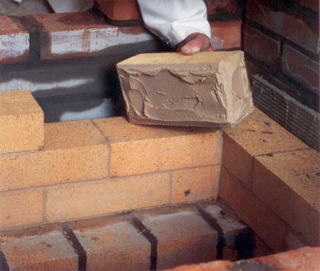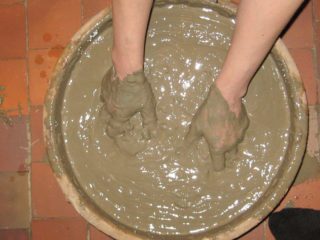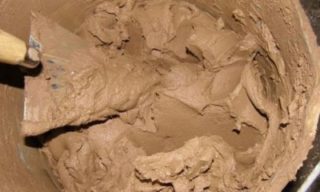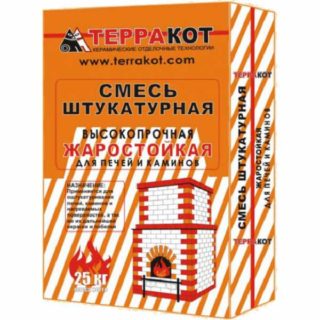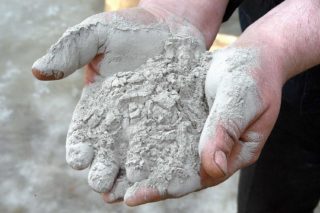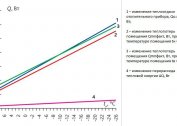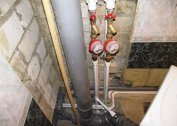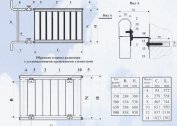Independent construction of a fireplace or stove involves the selection of refractory materials and mixtures. They prevent fire of the structure, do not allow smoke and combustion products. These requirements apply not only to building materials, but also to the solution for the fireplace, which must be durable, ductile and heat-resistant.
The choice of clay for the solution
The cement mixture used for stone structures does not withstand the effects of high temperature. For this reason, clay is used to erect a fireplace frame or stove. The material can be purchased in stores or dug up on the banks of a river or on the slope of a ravine. Depth usually does not exceed 0.5 m.
Fat determination
Clays are divided into normal, skinny and oily. The use of a mixture based on lean rocks will lead to brittleness and friability of the layer. It will not have strength and good adhesion to the surface. You can fix the situation with the help of oily clay.
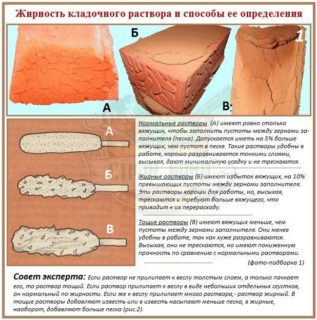 It is worth experimenting to determine the fat content and calculate the amount of sand:
It is worth experimenting to determine the fat content and calculate the amount of sand:
- To remove large fractions from 1 liter of clay and divide it into 5 parts.
- Arrange portions in separate containers.
- In the first part, do not add anything.
- Add sand equal to ¼ portion of clay to the second part.
- To the third part add sand in ½ portion of clay.
- With the fourth mix the sand in the same amount.
- To the fifth mix sand 1.5 times the portion.
Additionally, water is added to each tank. The solution is mixed to a “cool” state - homogeneous, plastic, not sticky to the hands.
Then a ball rolls from each serving and is placed between the polished bars. They press on one of them until cracks appear on the ball. A reduction in the clearance between the two boards by half indicates the fat content of the solution. If it was a bar with portion No. 5, then the clay is oily or there is an excess of sand in it. The normal mixture will crack when the lumber approaches 1/3 of the primary distance.
It is impossible to use fatty clay only - the solution may crack, shrink. You can normalize the material with sand.
Clay rock cleaning
To prepare the clay for work, it is filtered through a sieve with cells of 3 mm - under the masonry seam, equal to 3-5 mm. Particles with large fractions will damage the seam.
The second option for cleaning clay is alluvial. Cleaning is carried out in a long trough installed at an angle of 7 degrees. Water is poured into the lower part of the tank, and clay rock is poured portionwise into the upper part. With a spatula or trowel, a liquid is pumped that will wash the clay down. At the last stage of preparation, the material is filtered.
The amount of clay and water is chosen so that they do not interact with each other.
Before preparing the solution, pure clay is soaked in a container. Fill a layer with a thickness of 10-20 cm and moisten it with water. The material reaches full impregnation and softness after 24 hours. It will need to be mixed with a bayonet shovel, spilled and left for another 24 hours.
Solution composition
It is allowed to use a mortar with a volume of 8 times less than the volume of bricks or 10-13 times less than the volume of the entire structure for laying a fireplace or stove. The indicator is calculated by the external dimensions.
To exclude mathematical calculations, a standard ratio of components is taken: approximately 25 liters of mixture are needed per 100 bricks. Additional strength is achieved by adding 100-150 g of salt per 10 l of solution.For a similar purpose, Portland cement is added portionwise - 0.5-1 kg per 10 l of solution.
The mixture with Portland cement quickly hardens, so you need to cook it for a one-time laying.
The nuances of the selection and processing of sand
 The second component is mixed into the clay solution - fine-grained mountain sand with fractions up to 1 mm. It can be distinguished from river or sea visually. In the first case, the grains of sand will be smooth - they are polished with water. The rock is rough, which improves the strength of the composition and the quality of adhesion to the surface.
The second component is mixed into the clay solution - fine-grained mountain sand with fractions up to 1 mm. It can be distinguished from river or sea visually. In the first case, the grains of sand will be smooth - they are polished with water. The rock is rough, which improves the strength of the composition and the quality of adhesion to the surface.
Sand processing is carried out by washing:
- Make a homemade sieve. 4 boards 5-10 cm wide are knocked into a square box. The burlap is pulled to the bottom, nailing it with small nails.
- The product is mounted obliquely on a support.
- Sand is poured into the container portionwise and poured with water from a hose.
- Dirt and dust, together with the liquid, seep through the burlap.
You can check the quality of flushing by the purity of water.
Varieties and properties of fireplace solutions
The solution for the laying of the fireplace stove should ensure the strength of the fastening of all structural elements. Its preparation should begin with the selection of ingredients and determination of their properties.
Main masonry
The proportion of clay and sand is 1: 1, but with greasy clay take 2 parts of sand. Ready-made should get a creamy "dough". In the manufacture of mortar for the main masonry, several nuances must be taken into account:
- Introduce clean and fine sand into the composition without additional fractions - the mixture will be homogeneous, and the fireplace seam will become even and thin.
- In clay, there is a different ratio of clay, sand and dust particles. Visually determine the skinny, with minimal stickiness, the breed can be by the presence of sand elements. Normal material has a uniform structure, greasy - stickiness and viscosity.
- Brick is laid on a plastic, non-aqueous solution. The mixture is checked by trowel movement. Dry will tear, wet - swim away, normal - evenly move.
- Drinking quality water settles for 24 hours before cooking.
Knead the clay dough with a drill with a mixer nozzle.
The foundation and the outer part of the chimney
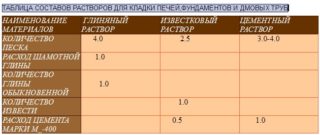 The base and the outer part of the chimney are in conditions of high humidity. Not knowing which solution is used for laying fireplaces, stop at the finished product. If you understand the construction of furnaces, you can make a composition based on lime or lime with cement:
The base and the outer part of the chimney are in conditions of high humidity. Not knowing which solution is used for laying fireplaces, stop at the finished product. If you understand the construction of furnaces, you can make a composition based on lime or lime with cement:
- Prepare a lime dough based on 3 parts water and 1 part quicklime. The ingredients are mixed to a softened clay.
- Prepare a working solution of 3 parts sand and 1 part dough. Cement is added to increase strength, but proportions vary. It will take 1 part of cement, 8-10 parts of sand and 2 parts of lime dough.
- Strain the material through a sieve with 3x3 mm cells.
- Check the quality of the solution by mixing it with a wooden spatula for 3 minutes. A lean composition will not stick, bold - it will stick with a thick layer and will be poorly removed. Normal dough will cover the scapula with clots or stick to a layer of 2-3 mm.
- Adjust ductility. In lean material, lime dough is added, in greasy - sand.
Lime building material can be stored up to 7 days.
Plastering work
Before decorative finishing, the fireplace is lined by applying plaster. Clay dough should be hardened by adding various ingredients. There are several recipes.
- With lime. The proportion of the components is selected on the basis of 1 part clay, 2 parts sand, 0.1 part asbestos and 1 part lime.
- Without lime. You will need to mix 1 part of clay with 1 part of cement, and then add 2 parts of sand and 0.1 part of asbestos.
- With plaster. The preparation of the solution is carried out in small quantities due to the rapid setting of gypsum.For one serving, 1 part of sand, 1 part of gypsum, 0.2 part of asbestos and 2 parts of quicklime are needed.
Regardless of the type of building material, each component is carefully measured and sieved. The components are combined in a dry form. Water is mixed with clay to a cream and poured into a dry mass.
For tiles
Ceramic tile is a popular decoration material for fireplaces or stoves. The use of pure clay mortar is unacceptable due to poor adhesion. Cement dough is also not suitable, since it cracks when exposed to temperature. For high-quality fastening of ceramic tiles, you can use the following recipe:
- 1 part of cement;
- 1 part clay;
- 2 parts of sand;
- water in the right amount.
Reliability of fastening of the cladding is achieved by filling the seams so that there is a 5 mm void on the outside. This thickness contributes to the penetration of the solution into the space and the strength of the adhesion of the masonry to the finish.
Stages of independent solution manufacturing
You can make a solution for fireplace masonry with your own hands after preliminary selection of clay and sand. When performing work, the following technology is observed:
- Preparation of materials. Clay is soaked with water and sieved through a fine-mesh sieve. The sand is cleaned to dry.
- The sand is mixed with clay and again passed through a sieve to obtain uniformity and crushing of possible clots.
- The mixture is checked for plasticity - it should slide smoothly from the trowel or shovel. Using this state, a reference weld thickness of 3 to 5 mm is achieved.
- Increase the strength of the solution. You will need to add ¾ l of Portland cement per 1 bucket of composition or table salt in an amount of 150-250 g. Cement is diluted with a liquid to a creamy state, the salt dissolves in water.
For laying flat brick for a fireplace with a quantity of 100 pieces with a seam of 5 mm, 2 buckets of the mixture will be required. During the construction of the Russian furnace, the consumption of material increases by 20%.
When laying a fireplace structure or stove yourself, it is necessary to check the quality of the solution. The life of the structure, protection against carbon monoxide and fire situations will depend on the ratio of components.
